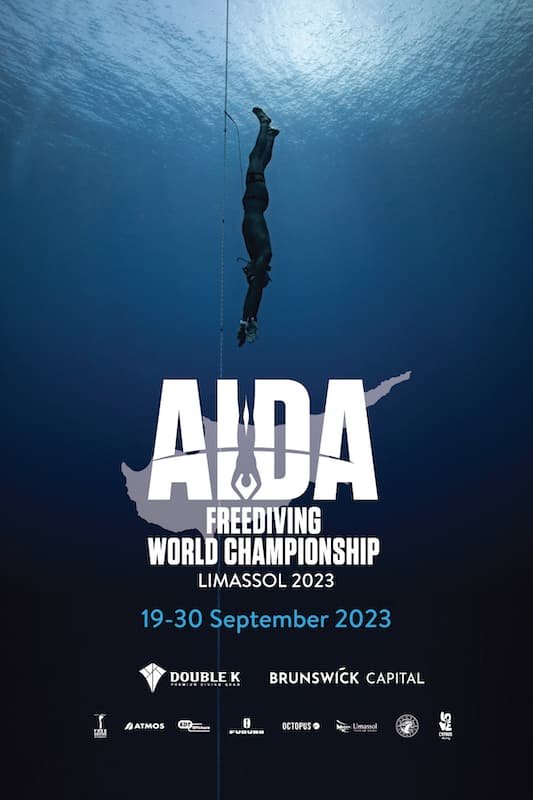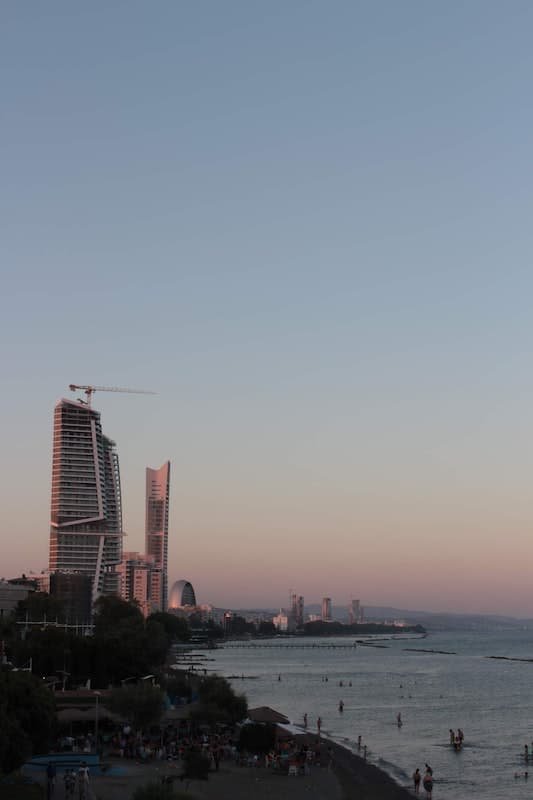
 Nick Pelios
Freediver, Creator
Nick Pelios
Freediver, Creator

 Nick Pelios
Freediver, Creator
Nick Pelios
Freediver, Creator
Join us for the 31st edition of the AIDA Freediving World Championship, organized by the International Association for the Development of Apnea (AIDA). This prestigious event is returning to the stunning coastal city of Limassol, Cyprus. From September 19th to September 30th, 2023, Limassol will play host to approximately 120 skilled freedivers from across the globe, offering an exciting blend of friendly competition and live training sessions.
The competition's stage will be set approximately one nautical mile off the Limassol shoreline, where the crystal-clear waters are anticipated to maintain a comfortable temperature range of 25-28°C, and a depth of 170 meters. These optimal conditions create a perfect backdrop for athletes to push their boundaries and achieve remarkable feats in the realm of freediving.
Throughout the World Championship, participants will engage in various freediving depth disciplines, including:
Constant Weight (CWT): In this discipline, freedivers strive to reach a predetermined depth by descending and ascending while employing fins/monofin and/or their arms for propulsion. The use of rope pulling or other propulsion aids besides fins/monofin is strictly prohibited.
Current Men’s World Record: 130 meters – Alexey Molchanov (International) Current Women’s World Record: 123 meters – Alessia Zecchini (Italy)
Constant Weight No Fins (CNF): Freedivers in this category attempt to achieve a specified depth using only their arms and legs for propulsion during their descent and ascent. The use of rope pulling or propulsion aids is not allowed.
Current Men’s World Record: 102 meters – William Trubridge (New Zealand) Current Women’s World Record: 73 meters – Alessia Zecchini (Italy)
Constant Weight Bifins (CWTB): In this discipline, freedivers aim to reach a designated depth by swimming with bifins and/or their arms. Similar to CWT, any use of rope pulling or propulsion aids other than bifins is strictly prohibited.
Current Men’s World Record: 121 meters – Alexey Molchanov (International) Current Women’s World Record: 109 meters – Alessia Zecchini (Italy)
Free Immersion (FIM): Freedivers undertaking this challenge descend and ascend while pulling on the rope, striving to attain a specific depth. The use of propulsion aids is not permitted in this discipline.
Current Men’s World Record: 128 meters – Petar Klovar (Croatia) Current Women’s World Record: 98 meters – Alessia Zecchini (Italy)
We invite you to be a part of this remarkable event, where world-class freedivers will push the boundaries of human potential and showcase their incredible skills in the mesmerizing waters of Limassol. Don't miss the 31st AIDA Freediving World Championship!

Visit Ancient Kourion - Ranked among Cyprus' premier tourist destinations and boasting a wealth of remarkable archaeological wonders, the ancient city-kingdom of Kourion, alternatively spelled as Curium, finds a prominent place on the to-do lists of most visitors. Kourion has been inhabited since the Neolithic era, yet the awe-inspiring edifices on display primarily trace their origins back to the Greco-Roman period.
The compact amphitheater, initially constructed during the 2nd century, underwent expansion courtesy of the Romans. Following its destruction in the 4th century due to an earthquake, the theater has been meticulously reconstructed. It offers breathtaking vistas of the rugged coastal cliffs and the expansive Mediterranean Sea.
For enthusiasts of mosaic art, the House of Eustolios neighboring Ancient Kourion steals the spotlight. Originally serving as an opulent Roman villa, it was later repurposed into a communal recreation center and public baths during the Byzantine era. The exquisitely preserved mosaic floors here are a true marvel. Be sure to admire the mosaic depicting Achilles in disguise as a woman, as well as the renowned four-panel mosaic featuring a partridge and the deity Ktisis. Continuing along the cliff's edge, you'll encounter the remains of a 5th-century Byzantine basilica, a Roman Nymphaeum adorned with decorative fountains, and extensive remnants of public baths. A brief path leads to the House of the Gladiators, aptly named for the in-situ mosaics illustrating a gladiatorial combat on its floors.
After your exploration of the site, consider a visit to the nearby village of Episkopi, situated two kilometers to the northeast, where you can explore the Kourion Museum. This museum houses a treasure trove of smaller artifacts unearthed from both Kourion and the Sanctuary of Apollo. Ancient Kourion can be found 18 kilometers to the west of central Limassol, making it easily accessible for travelers eager to delve into Cyprus' rich history.

Relax In Limassol's Old Town - The most captivating area to explore in Limassol is unquestionably its lively old town district. Situated right at the heart of the city, the central square boasts Limassol Castle, a prominent tourist attraction that dates back to the 14th century and was erected upon the site of an earlier Byzantine structure. Vestiges of the earlier fortifications are visible just inside the castle walls.
It was within these historic walls that Richard the Lionheart of England wedded Berengaria, and later, the Ottomans repurposed it as a military stronghold. The entire interior of the castle now serves as the home of the Limassol Medieval Museum, housing an enthralling assortment of armor, weaponry, religious icons, and tombstones.
Surrounding the main square, you'll find a charming array of cafes and restaurants, perennially abuzz with Limassol's vibrant youth. After immersing yourself in the castle's history, venture to the modern facet of the city at the innovative Lanitis Art Foundation, also located on the main square. Housed within an old Carob Mill, it hosts a dynamic rotation of exhibitions.
A brief stroll east from the square leads you to the substantial Limassol Cathedral, featuring a delightfully Baroque facade. Meanwhile, tucked away in a meandering alley, you'll discover the petite Grand Mosque, gracefully enveloped by palm trees.

Visit Aphrodite's Rock - According to local legend, this is the very spot where the goddess Aphrodite emerged gracefully from the sea's embrace. In the present day, it stands as one of the island's most enchanting locations to behold the sunset. The rock's Greek name, "Petra tou Romiou," or "Rock of the Greek," is linked to the mythical Byzantine guardian Digenis Akritas. The tale recounts his valiant defense against Arab pirates, who were deterred by his skillful rock-throwing from the hillside above. Here, two substantial rocks extend out into the sea, forming one of Cyprus' most frequently captured seascapes.

This captivating backdrop has served as a wellspring of inspiration for numerous poets and artists, most notably influencing Botticelli's renowned painting, "The Birth of Venus" (displayed in Florence). Although the beach itself features pebbles rather than sand, it remains a favored spot for picnics and is a must-visit destination for travelers journeying along the coastline between Limassol and Paphos. Aphrodite's Rock can be found along the primary coastal highway, approximately 43 kilometers west of Limassol.